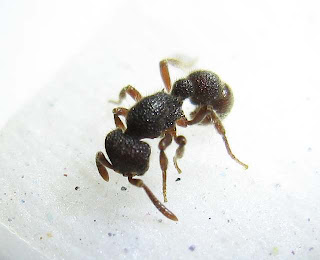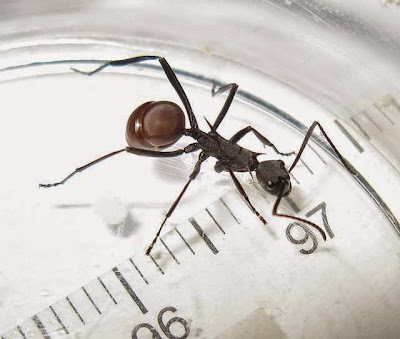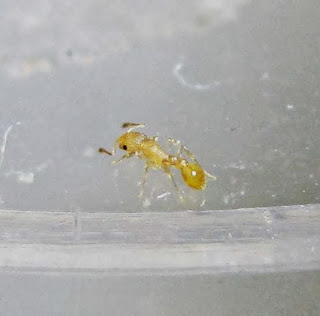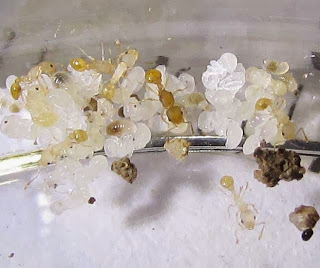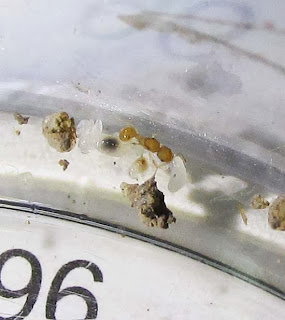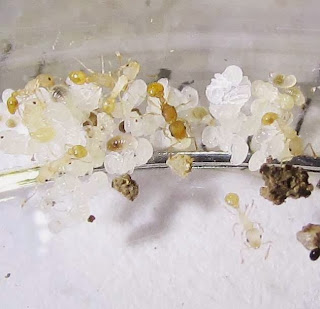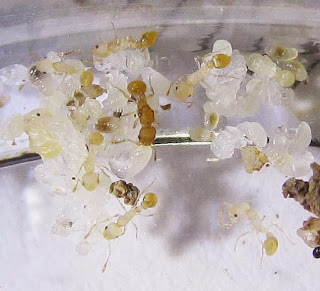Cardiocondyla are mostly small ground dwelling Myrmicinae ants. Workers are monomorphic.
Workers of Cardiocondyla sp.
A Cardiocondyla sp. ant worker.
A Cardiocondyla sp. ant worker.
Cardiocondyla sp. ant workers.
A Cardiocondyla sp. queen, workers and brood.
Cardiocondyla sp. ant worker, larvae and pupae.
Cardiocondyla sp. ant worker, larvae and pupae.
Cardiocondyla sp. ant worker, larvae and pupae.
A gyne of Cardiocondyla sp. ants.
A Cardiocondyla sp. queen, workers and brood.
A Cardiocondyla sp. gyne, workers and brood.
Cardiocondyla sp2
This species is larger, the workers are around the size of Monomorium pharaonis.
Cardiocondyla sp(03)
Taxonomy:No rank: cellular organisms 131567
Superkingdom (Domain): Eukaryota 2759
No rank: Opisthokonta 33154
Kingdom: Metazoa 33208
No rank: Eumetazoa 6072
No rank (Subkingdom): Bilateria 33213
No rank (Branch): Protostomia 33317
No rank (Infrakingdom): Ecdysozoa
No rank (Superphylum): Panarthropoda 88770
Phylum: Arthropoda 6656
No rank (Subphylum): Mandibulata 197563
No rank: Pancrustacea 197562
Subphylum (Epiclass): Hexapoda 6960
Class: Insecta 50557
No rank (Subclass): Dicondylia 85512
Subclass (Infraclass): Pterygota 7496
Infraclass: Neoptera 33340
Cohort: Holometabola
Order: Hymenoptera 7399
Suborder Apocrita 7400
Infraorder: Aculeata 7434
Superfamily: Formicoidea
Family: Formicidae 36668
Subfamily: Myrmicinae 34695
Tribe: Formicoxenini 144010
Genus: Cardiocondyla 235541
Last Updated: 2021 10 23
First Posted: 2015 09 09
© 2009 – 2021 Quah. All rights reserved.













